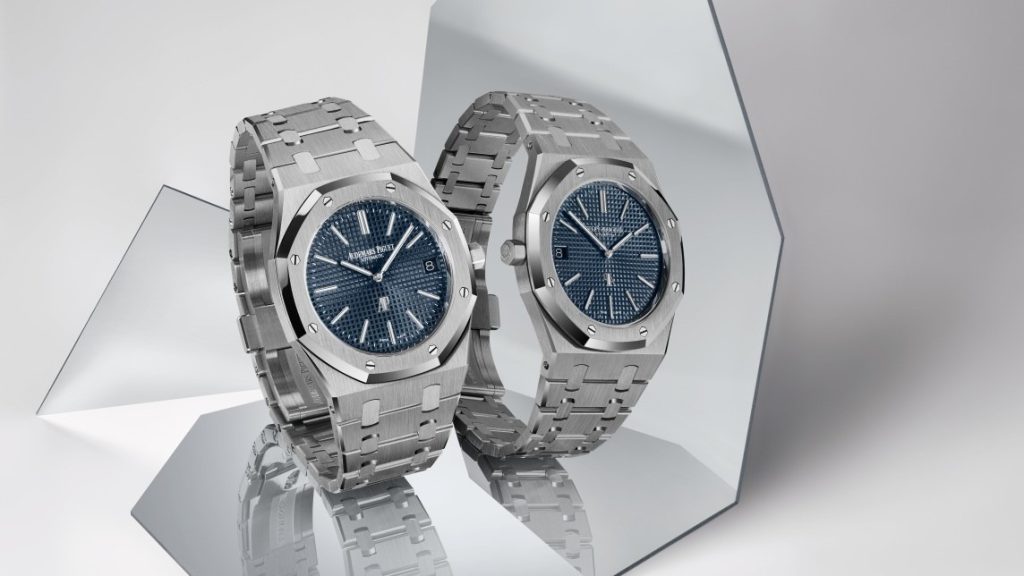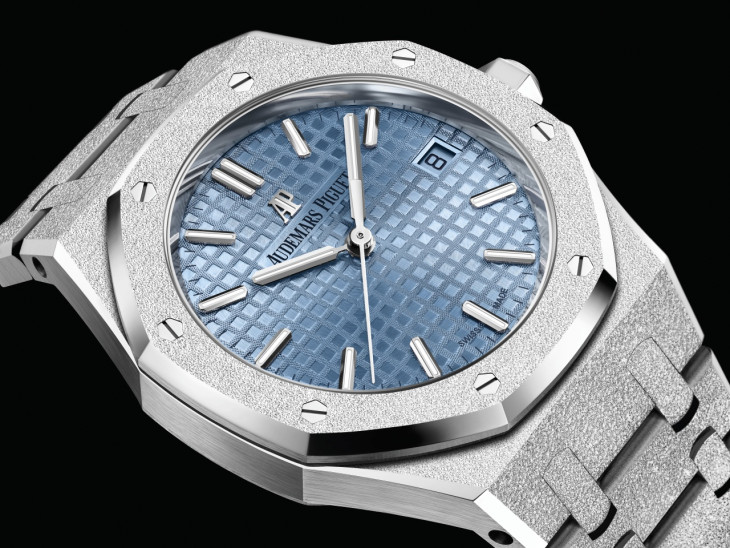Introduce
Audemars Piguet, one of the most prestigious and renowned names in the world of haute horlogerie, is a symbol of precision, innovation, and meticulous craftsmanship. Founded in 1875 in Le Brassus, Switzerland, Audemars Piguet has been at the forefront of watchmaking, blending artistry with technology in the creation of its timepieces. Known for revolutionizing luxury sports watches, particularly with the iconic Royal Oak, Audemars Piguet has built its reputation not only on stunning designs but also on cutting-edge watchmaking technology.
This article delves into the craftsmanship and technology that defines Audemars Piguet watches, exploring the meticulous process behind each timepiece, the technical innovations that set it apart, and the dedication to preserving tradition while embracing future advancements.
I. The Heritage and Legacy of Audemars Piguet
Audemars Piguet was founded by Jules-Louis Audemars and Edward-Auguste Piguet in 1875. The brand quickly became known for its technical innovation and elegant designs, establishing itself as one of Switzerland’s most prestigious watchmakers. In its early years, Audemars Piguet specialized in crafting complicated pocket watches, producing timepieces with features like perpetual calendars, chronographs, and minute repeaters.
The company’s long-standing commitment to innovative design and precision craftsmanship is evident in its continued success today. Audemars Piguet has remained an independent, family-owned company, a rare feat in an industry often dominated by large conglomerates. This independence has allowed Audemars Piguet to maintain its focus on quality and technological innovation, with no compromises on the integrity of the brand.
II. The Technological Foundation of Audemars Piguet Timepieces
Audemars Piguet’s reputation is built upon the continuous pursuit of excellence in mechanical watchmaking. The company has been responsible for numerous advancements in watchmaking technology, many of which have become industry standards. These innovations, combined with the dedication to traditional Swiss craftsmanship, form the backbone of Audemars Piguet’s exceptional timepieces.
1. In-House Movements: Precision and Mastery
One of the cornerstones of Audemars Piguet’s technological prowess is its commitment to designing and manufacturing in-house movements. The watch brand is renowned for creating some of the most complex and refined calibers in the industry. Audemars Piguet was one of the first watchmakers to develop its own mechanical movements, and today, the company continues to produce all of its calibers in-house at its facilities in Switzerland.
Each movement is a masterpiece, carefully constructed by a team of watchmakers and technicians who ensure the utmost precision and performance. Audemars Piguet movements feature advanced technology and sophisticated features, including self-winding mechanisms, high-frequency oscillators, automatic chronograph systems, and perpetual calendars. These movements are celebrated for their reliability, power reserve, and ability to maintain excellent accuracy, even under the most demanding conditions.
2. The Caliber 3120: A Benchmark in Excellence
The Caliber 3120 is one of the most celebrated movements produced by Audemars Piguet. Used in the Royal Oak and other collections, this automatic movement showcases the brand’s commitment to technical excellence. With a power reserve of 60 hours, the Caliber 3120 is a self-winding mechanical movement that features 23 jewels and a high-quality finishing that includes hand-decorated elements such as Côtes de Genève, perlage, and anglage (polished bevels).
The movement’s oscillating weight, which winds the watch when worn, is designed in-house and is visible through the transparent case back, further elevating the Royal Oak’s aesthetic appeal. The Caliber 3120 is just one example of how Audemars Piguet combines traditional craftsmanship with cutting-edge technology to create exceptional timepieces that stand the test of time.
3. Ultra-Thin Movements: A Triumph of Microengineering
Audemars Piguet is also known for producing some of the world’s thinnest movements, combining exceptional mechanical performance with an ultra-thin profile. The Royal Oak Extra-Thin (ref. 15202), for example, features a thin case and thin movement that requires the highest level of microengineering.
The Caliber 2121, which powers this model, is one of the thinnest automatic movements in the world, measuring just 3.05mm in thickness. The engineering behind this ultra-thin movement is a testament to the skill of Audemars Piguet’s horologists, who combine precision mechanics with innovative materials and design solutions to create a remarkably slim profile without compromising on the movement’s durability or functionality.
4. Complicated Movements: Pushing the Boundaries of Innovation
Audemars Piguet is a pioneer in creating watches with complicated movements—those that feature additional functions beyond basic timekeeping. The company is known for producing timepieces with perpetual calendars, minute repeaters, tourbillons, and chronographs—all integrated into the same watch.
One of the standout examples of this is the Audemars Piguet Royal Oak Concept series, which showcases highly complicated movements, often incorporating futuristic designs with state-of-the-art mechanical systems. Minute repeaters, for example, are some of the most challenging complications to create, as they require precise engineering to chime the hours, quarters, and minutes using hammers and gongs.
Incorporating a tourbillon—a rotating cage designed to improve accuracy by compensating for the effects of gravity—is another hallmark of Audemars Piguet’s technical ingenuity. Their tourbillon movements are known for their precision, beauty, and the challenges involved in their assembly, making them highly sought after by collectors and enthusiasts.
III. The Craftsmanship: Excellence in Every Detail
While technology and innovation are integral to Audemars Piguet’s reputation, it’s the level of craftsmanship that truly sets the brand apart. The attention to detail and the quality of the finishes that go into each timepiece ensure that an Audemars Piguet watch is not just a functional instrument but a work of art.
1. Case Manufacturing: Precision in Form and Function
The creation of an Audemars Piguet case is an intricate process that begins with selecting the highest-quality materials, such as stainless steel, 18K gold, and platinum. Each case is carefully crafted and finished by hand, ensuring perfect alignment and fit.
Audemars Piguet has developed a unique process for finishing its cases, which includes both brushed and polished surfaces. The brushed finishes give the case a matte, industrial feel, while the polished edges provide contrast and an added layer of elegance. This combination of finishes is what gives Audemars Piguet watches their signature luxurious yet sporty appearance.
The Royal Oak, with its integrated bracelet and octagonal bezel, requires a high degree of technical skill to ensure that every piece fits perfectly. The creation of the bezel—with its distinctive eight screws—is an example of how Audemars Piguet’s design takes functional elements and turns them into aesthetically pleasing features.
2. Dial and Decoration: Artistry and Elegance
The dial of an Audemars Piguet watch is another area where the brand’s craftsmanship truly shines. The Tapisserie pattern, which is found in many of the Royal Oak models, is created through a meticulous engraving process that requires extreme precision. The texture of the dial adds a tactile element that enhances the visual depth, creating a sense of luxury and sophistication.
Audemars Piguet uses a range of decorative techniques, including skeletonization, guilloché engraving, and lacquer finishing to elevate the dial’s appearance. The goal is not only to create a dial that tells time but to craft a three-dimensional experience that reflects the brand’s philosophy of beauty and functionality.

IV. Innovation in Materials: Pushing the Boundaries of Watchmaking
Audemars Piguet is constantly seeking new materials to enhance both the performance and aesthetic appeal of its watches. The brand has pioneered the use of ceramic, titanium, and carbon fiber in watchmaking, combining these materials with traditional gold, platinum, and stainless steel for both durability and elegance.
1. Ceramic: Strength Meets Elegance
In the past few years, Audemars Piguet has incorporated ceramic into its collections, including the Royal Oak Offshore models. Ceramic is prized for its lightweight nature and scratch resistance, making it the perfect material for
watches designed to withstand the rigors of daily wear. The ceramic cases of the Royal Oak Offshore are available in various colors, such as black, blue, and gray, providing a contemporary and bold alternative to traditional metal cases.
2. Titanium and Carbon Fiber: Ultra-Light, Ultra-Strong
Audemars Piguet has also embraced the use of titanium and carbon fiber for their lightweight and durable properties. The combination of carbon fiber with titanium results in timepieces that are incredibly strong yet light on the wrist. These materials are particularly popular in the Royal Oak Offshore collection, where they are used to create watches with a more rugged and sporty appearance without sacrificing the elegance that is synonymous with Audemars Piguet.
V. Audemars Piguet in the Modern Era: Embracing the Future of Watchmaking
While Audemars Piguet’s commitment to tradition is unwavering, the brand has also embraced modern innovations to stay at the forefront of the watchmaking industry. Advances in technology and manufacturing techniques have allowed Audemars Piguet to push the boundaries of what is possible, from the use of cutting-edge materials to digital integration.
The brand’s vision of combining heritage with innovation ensures that Audemars Piguet watches will remain timeless and relevant for generations to come.
Conclusion: The Audemars Piguet Legacy of Excellence
Audemars Piguet is a name that represents excellence, innovation, and timeless craftsmanship. From the development of its iconic movements to its commitment to using cutting-edge materials, the brand continues to push the limits of what is possible in watchmaking. Whether through its technical achievements or its focus on artistry, Audemars Piguet watches remain at the pinnacle of the watchmaking world, revered by collectors and horology enthusiasts worldwide.
Through its constant pursuit of perfection, Audemars Piguet ensures that each watch is not just a tool for telling time but a masterpiece that combines the best of technology and craftsmanship. This is the legacy of Audemars Piguet: a fusion of the past, the present, and the future, all wrapped into one unparalleled timepiece.





































